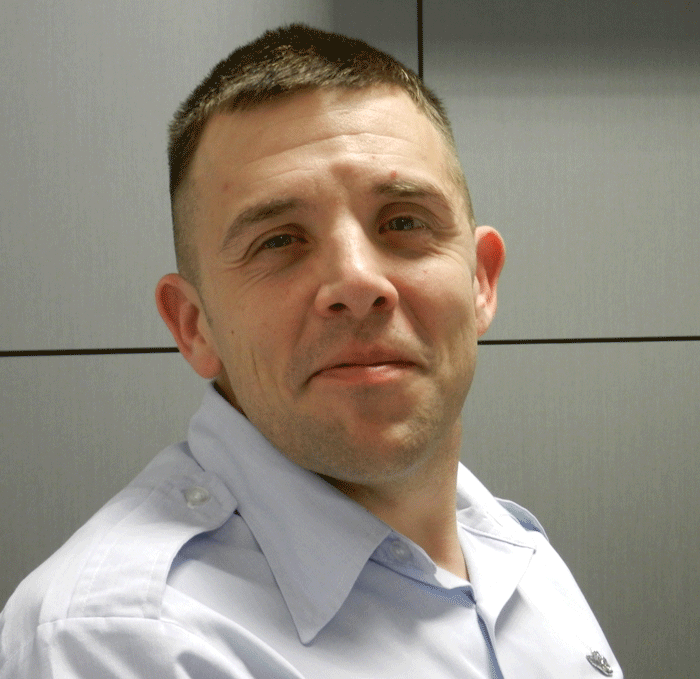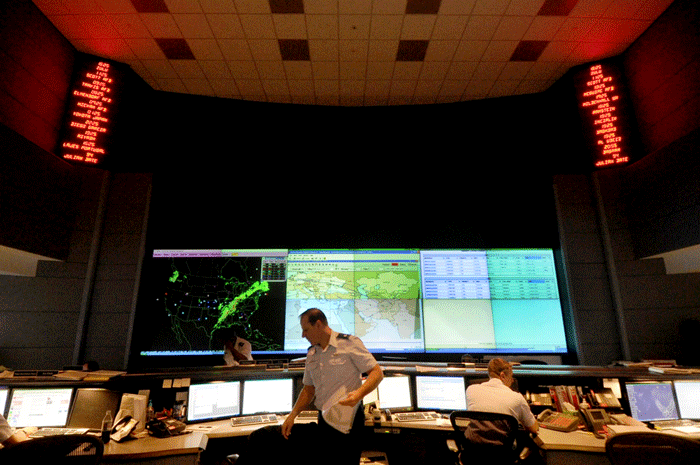The Tanker Piece: Matching Limited Assets Against Significant Demand
05/19/2011 – The Tankers are clearly one of the key mobility assets in significant demand. However, given the age of the fleet, readiness is an issue affecting availability. Master Sgt. Jeremiah Love kicked off the discussion at the Tanker Airlift Control Center (TACC) about the tanker piece of the TACC puzzle during the roundtable. Col. Mintzlaff, senior controller, added some important operational comments as well. Major Charles Marek also added some comments with regard to the KC-135s and aeromedical evacuations (AE).
Love: We deal with anything from the Coronets with fighters moving to and from the states or any [tanker] support to and from overseas locations, to more short notice type events such as contingency and Presidential support. The Coronets are probably the most dynamic as far as planning and movement of assets just because it’s so much iron being put up in the air at the same time. Taking three or four tankers to support a 12-ship fighter deployment from the states to an overseas location requires a lot of coordination.

Master Sgt. Love During the SLD Interview April 2011
Credit: SLD 2011
SLD: How do you work the short and long-term planning issues?
Love: We have three different divisions: Coronets, Short-Notice and Homeland Defense Tankers, and within the Coronet branch, we have a long-range and short-range planning. Our long-range Coronet planners take a look at the overall big picture according to ACC’s requirements, and determine what the tanker requirements are. The long-range planners work hand-in-hand with the barrel because ACC [at times] may want to move a very large number of fighters all at one time, or within a two-week period, but the tanker assets just aren’t available. Another planning concern is they may need a particular type of tanker, such as those required by the Navy because some of their assets require soft basket air refueling.
That might require managing the tradeoff of KC10s versus the 135s in the ratio. That is why our long-range planners work with the barrel very closely. During the mission launch, our detail planners actually come in and help assist the execution side of the house. They try to be a one-stop shop.The other two branches mostly work short-range taskings. The Homeland Defense branch primarily works Operation Noble Eagle taskings, this could be anything from supporting NASA to the President, or special events such as the Olympics.The short-notice branch, like the Coronet shop, works tanker requirements around the world. Anything from air bridge requirements at various locations to state-side support like high-priority test missions, exercises, and contingency operations.

The TACC operations floor
Credit: TACC
SLD: What’s the biggest challenge that you face from dealing with managing the tanker supply?
Love: It’s having enough assets available because there’s a huge demand for the tankers. No matter where it is around the world, there’s such a demand for them that we just can’t be everywhere at the same time. So, we balance out the requirements while trying to stay within the priority system (i.e what’s higher JCS priority than the other). We just don’t have the tankers we used to have at one point in time. Even in the couple of years that I’ve been here, our number of taskings have gone up that much.
SLD: Another aspect of the tanker issue which I think is not really focused upon outside of the USAF is the changing role of the tankers. Historically, tankers were at the rear of the action. Now they are part of the battlespace.
Mintzlaff: When I did Desert Storm, tankers were way in the rear. When I was in Afghanistan, we were looking down on the battle. When you bring that many assets that much closer to the fight, you start opening up the door to other things that can go on an airplane to help the folks on the ground. These are things like helping with the convoy and mitigation as well as communications. I think as you change the way you fight, you need to take full advantage of the assets that are there to be used and figure out how to use them.
Marek: We’re now utilizing KC-135s as well for aeromedical evacuation. The KC135s have patient support pallets, which have both seats and litter stanchions built on them. They just clip right into the aircraft or some actually have just seats or just litter stanchions.

